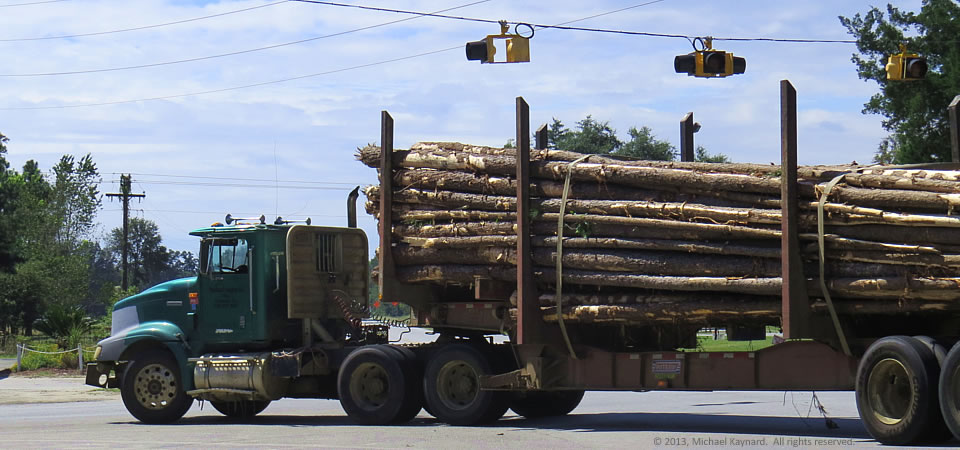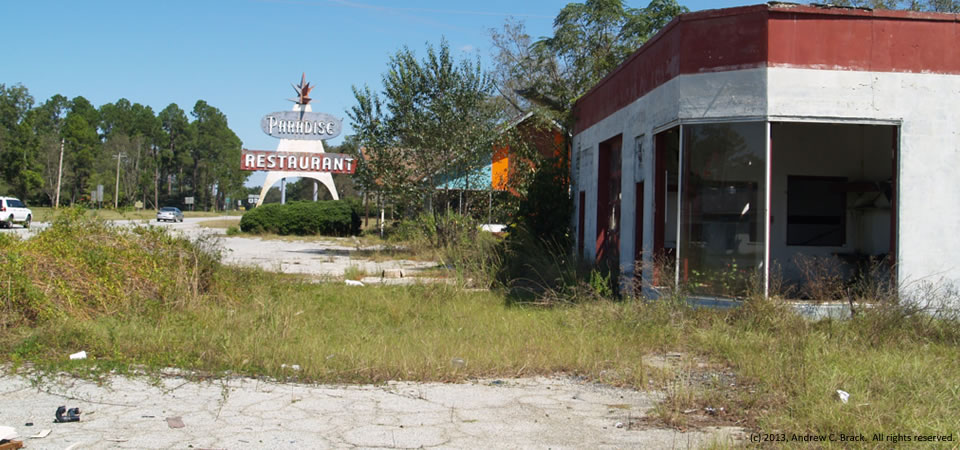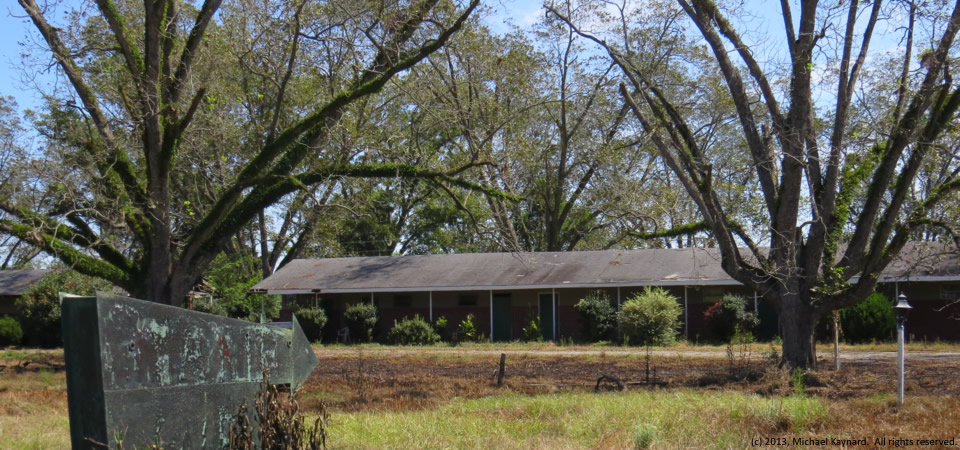
Here’s a typical scene across the rural South — a log truck hauling lumber to be processed into 2x4s or pulverized into pulp for mills.
These days, the forest products market in the U.S. is considered optimistic in the near-term, according to a 2013 report by USEndowment.org. And that, should help the rural South. In the longer term, the market faces challenges and opportunities, according to the report.
In the photo above, the truck was turning off U.S. Highway 301 in Cooperville, Ga., in Screven County and heading toward Savannah. The county, which had 2,675 people in 2000, according to the Census, got started after the Revolutionary War and soon became part of the Black Belt of Georgia where cotton became an important staple crop tended by enslaved African Americans.
The county’s population jumped from 3,019 in 1800 to 8,274 by 1860, according to Census figures. While it had 14,593 people in 2010, the county lost an estimated 391 people — 2.7 percent — by 2012, according to the U.S. Census. In 2010, Some 25.4 percent of county residents lived below the federal poverty level, 9 points higher than the state average.
Photo taken Sept. 23, 2013, by Michael Kaynard. All rights reserved.



